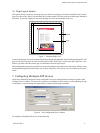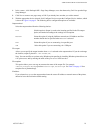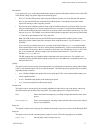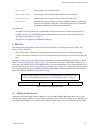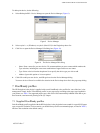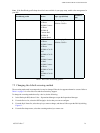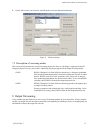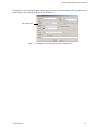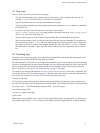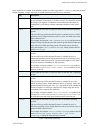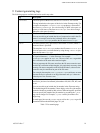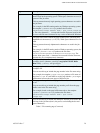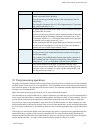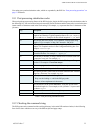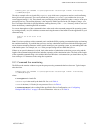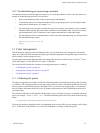
USER GUIDE FOR HP 6 COLOR PLUGIN
AG50324 Rev. 7 17
8.1 Tag usage
There are a few rules to keep in mind when using tags:
• You may limit the length of any expanded (derived) file name by using an integer before the tag. For
example,
<5jobname> limits the name to a maximum of 5 characters.
• Tags which produce numeric values are truncated from left to right.
• Tags that produce alphanumeric strings (strings containing the characters a-z, A-Z, and 0-9) are truncated
from right to left.
• Fixed text can be part of the file name stem or extension. For example,
stem_<3unique><sepname><dot>hpf would generate a file name of the form: stem_000Cyan.hpf, in
which
stem_ can be any identifying text.
• The tags will not produce useful file names from job names that contain double-byte characters.
• When creating multiple copies of a file, the same page buffer provides tag information. If a template con-
tains dynamic tags (such as
<time>, where the value changes each time a page buffer file is output), mul-
tiple copies of the file are created. If the template contains just static tags (such as
<jobname>, where the
job name remains constant), a single output file will be created, as previous output files will be overwrit-
ten.
8.2 Checking tags
The plugin always checks the legality of an automatically generated file name against the requirements of the
operating system on which the RIP and the plugin are running.
To enable portability of files from one operating system to another, you can also use tags to specify the operating
system for which generated file names must be suitable. The use of these tags changes the rules by which a file
name is deemed valid. The tags do not modify the file names generated, but cause error messages if the file
name is invalid. See “Messages for file name templates” on page 32 for details.
For example, you can create the template
<dos>Averylongfilename<dot>hpf, but an error is generated. This
error occurs because DOS file names require the 8.3 format for stem and extension, which this template fails to
meet by having 17 characters in its stem. Table 4 lists the operating system tags.
Examples of tag usage
The following examples demonstrate the format of strings produced by individual tags. Some examples also
show how the tags may be used in combination to form a template. The examples are based on these job details:
Page buffer name: 1. Uncalibrated Target: Default CMYK + spot colors target
Date: 29th of January, 2007
Compression: Packbits Encoding
Quality: Best
Note: When creating multiple copies of a file, the same page buffer provides tag information. If a template con-
tains dynamic tags (such as
<time>, where the value changes each time a page buffer file is output), multiple



